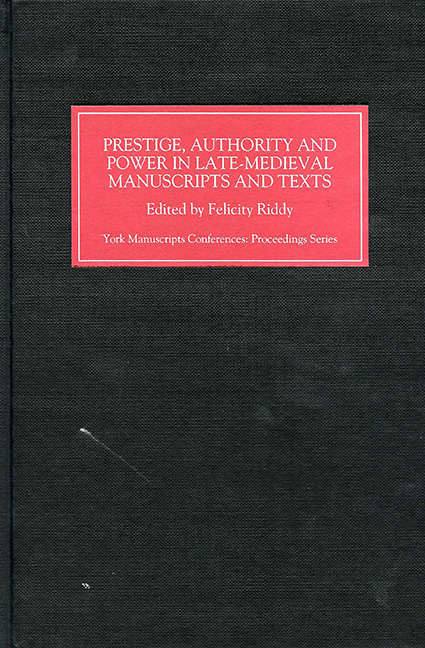16 results
Nutritional depletion of total mixed rations by red-winged blackbirds and projected impacts on dairy cow performance
-
- Journal:
- Journal of Dairy Research / Volume 85 / Issue 3 / August 2018
- Published online by Cambridge University Press:
- 29 August 2018, pp. 273-276
- Print publication:
- August 2018
-
- Article
- Export citation
Risk of Surgical Site Infection (SSI) following Colorectal Resection Is Higher in Patients With Disseminated Cancer: An NCCN Member Cohort Study
-
- Journal:
- Infection Control & Hospital Epidemiology / Volume 39 / Issue 5 / May 2018
- Published online by Cambridge University Press:
- 19 March 2018, pp. 555-562
- Print publication:
- May 2018
-
- Article
- Export citation
United Nations Justice: Legal and Judicial Reform in Governance Operations, Calin Trenkov-Wermuth (New York: United Nations University Press, 2009), 304 pp., $36 paper.
-
- Journal:
- Ethics & International Affairs / Volume 24 / Issue 3 / Fall 2010
- Published online by Cambridge University Press:
- 14 April 2011, pp. 335-337
-
- Article
- Export citation
Frontmatter
-
- Book:
- Prestige, Authority and Power in Late Medieval Manuscripts and Texts
- Published by:
- Boydell & Brewer
- Published online:
- 24 October 2017
- Print publication:
- 19 December 2000, pp i-v
-
- Chapter
- Export citation
Index of manuscripts
-
- Book:
- Prestige, Authority and Power in Late Medieval Manuscripts and Texts
- Published by:
- Boydell & Brewer
- Published online:
- 24 October 2017
- Print publication:
- 19 December 2000, pp 189-191
-
- Chapter
- Export citation
List of Plates
-
- Book:
- Prestige, Authority and Power in Late Medieval Manuscripts and Texts
- Published by:
- Boydell & Brewer
- Published online:
- 24 October 2017
- Print publication:
- 19 December 2000, pp vii-viii
-
- Chapter
- Export citation
York Medieval Press: Publications
-
- Book:
- Prestige, Authority and Power in Late Medieval Manuscripts and Texts
- Published by:
- Boydell & Brewer
- Published online:
- 24 October 2017
- Print publication:
- 19 December 2000, pp 200-200
-
- Chapter
- Export citation

Prestige, Authority and Power in Late Medieval Manuscripts and Texts
-
- Published by:
- Boydell & Brewer
- Published online:
- 24 October 2017
- Print publication:
- 19 December 2000
Contents
-
- Book:
- Prestige, Authority and Power in Late Medieval Manuscripts and Texts
- Published by:
- Boydell & Brewer
- Published online:
- 24 October 2017
- Print publication:
- 19 December 2000, pp vi-vi
-
- Chapter
- Export citation
Index of names and titles
-
- Book:
- Prestige, Authority and Power in Late Medieval Manuscripts and Texts
- Published by:
- Boydell & Brewer
- Published online:
- 24 October 2017
- Print publication:
- 19 December 2000, pp 192-199
-
- Chapter
- Export citation
Behavioral disinhibition and the development of substance-use disorders: Findings from the Minnesota Twin Family Study
-
- Journal:
- Development and Psychopathology / Volume 11 / Issue 4 / December 1999
- Published online by Cambridge University Press:
- 01 December 1999, pp. 869-900
-
- Article
- Export citation
Substance dependence and externalizing psychopathology in adolescent boys with small, average, or large P300 event-related potential amplitude
-
- Journal:
- Psychophysiology / Volume 36 / Issue 5 / September 1999
- Published online by Cambridge University Press:
- 01 September 1999, pp. 583-590
- Print publication:
- September 1999
-
- Article
- Export citation
Individual differences in electrodermal responsivity to predictable aversive stimuli and substance dependence
-
- Journal:
- Psychophysiology / Volume 36 / Issue 2 / March 1999
- Published online by Cambridge University Press:
- 01 March 1999, pp. 193-198
- Print publication:
- March 1999
-
- Article
- Export citation
Pendeo-Epitaxy - A New Approach for Lateral Growth of Gallium Nitride Structures
-
- Journal:
- Materials Research Society Internet Journal of Nitride Semiconductor Research / Volume 4 / Issue S1 / 1999
- Published online by Cambridge University Press:
- 13 June 2014, pp. 275-280
- Print publication:
- 1999
-
- Article
-
- You have access
- HTML
- Export citation
Pendeo-Epitaxy - A New Approach for Lateral Growth of Gallium Nitride Structures
-
- Journal:
- MRS Online Proceedings Library Archive / Volume 537 / 1998
- Published online by Cambridge University Press:
- 15 February 2011, G3.38
- Print publication:
- 1998
-
- Article
- Export citation
Discussion
-
- Journal:
- Proceedings of the ASIL Annual Meeting / Volume 85 / 1991
- Published online by Cambridge University Press:
- 28 February 2017, pp. 18-29
- Print publication:
- 1991
-
- Article
- Export citation



 0} side walls of [0001] oriented GaN columns into and over adjacent etched wells has been achieved via MOVPE technique without the use of, or contact with, a supporting mask or substrate.
0} side walls of [0001] oriented GaN columns into and over adjacent etched wells has been achieved via MOVPE technique without the use of, or contact with, a supporting mask or substrate. 